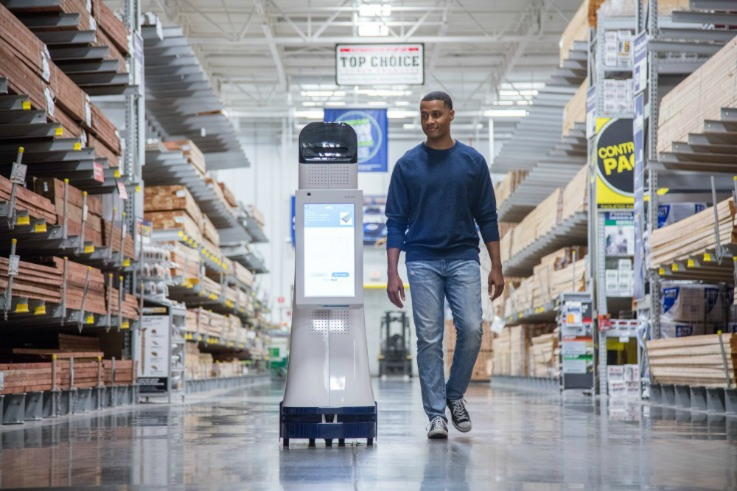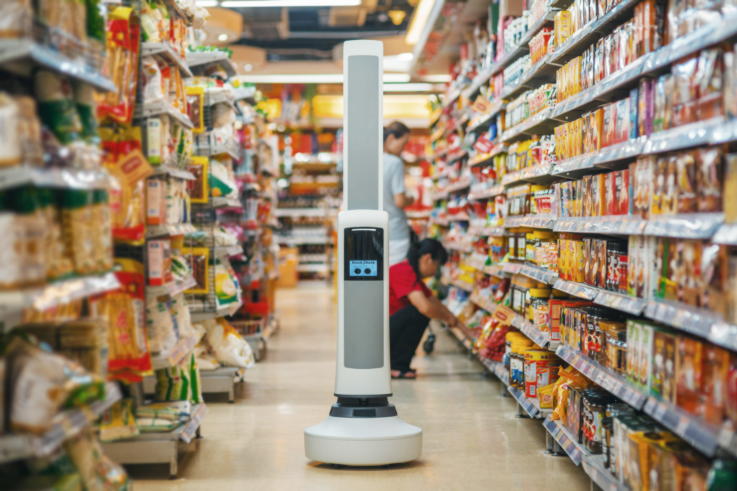Retail Trends Factfile 2017: Robotics

Robotics and AI are changing the world we live in, including the retail industry. We’ve gathered together top stats on just how things are changing and how the pace of automation is picking up.
The global collaborative robot market is expected to be worth $95.0 billion by the end of 2024 as compared to $10.3 billion in 2015. (Transparency Market Research, 2017)
The number of industrial robots deployed worldwide will increase to around 2.6 million units by 2019. (International Federation of Robotics, 2016)
Robots will take 24.7 million jobs by 2027, but create 14.9 million new jobs in the same time period. (Forrester, 2017)
Cognitive technologies such as robots, artificial intelligence (AI), machine learning, and automation will replace 7% of US jobs by 2025. (Forrester, 2017)
30% of UK jobs could potentially be at high risk of automation by the early 2030s, lower than the US (38%) or Germany (35%), but higher than Japan (21%). (PwC, 2017)
Around 2.3 million jobs in the UK wholesale and retail trade sector are at potential high risk of automation. (PwC, 2017)
Worldwide sales of warehousing and logistics robots reached $1.9 billion in 2016 and is expected to reach a market value of $22.4 billion by the end of 2021. (Tractica, 2017)
Worldwide warehousing and logistics robot unit shipments will increase from 40,000 in 2016 to 620,000 units annually by 2021. (Tractica, 2017)
By 2019, more than 1.4 million new industrial robots will be installed in factories around the world. (International Federation of Robotics, 2016)
Half of the top 10 nations with the most industrial robots per 10,000 employees belong to the European Union. (International Federation of Robotics, 2016)
In 2016 the North American robotics market broke all-time records with 34,606 robots (valued at approximately $1.9 billion) ordered, representing growth of 10% in units over 2015. (Robotic Industries Association, 2017)
Worldwide spending on robotics and related services will more than double by 2020, growing from $91.5 billion in 2016 to more than $188 billion in 2020. (IDC, 2017)
Purchases of robotics systems, which include consumer, industrial, and service robots, and after-market robotic hardware, will total more than $40 billion in 2016. (IDC, 2017)
The fastest growing segments of robotics spending are drones and after-market drone hardware, which will grow to nearly $20 billion in 2020. (IDC, 2017)
In 2019 some 40% of the worldwide market volume of industrial robots will be sold in China. (International Federation of Robotics, 2016)
71% of decision makers surveyed believe that the adoption of AI in business and society is inevitable. (Infosys, 2016)

76% of senior decision-makers agree that AI is fundamental to the success of their organisation’s strategy. (Infosys, 2016)
71% of decision makers have seen or expect to see industry disruption by AI technologies. (Infosys, 2016)
By 2020, surveyed companies expect to see AI contributing a 39% average increase in revenue and a 37% average cut in operating costs. (Infosys, 2016)
Only 25% of decision makers surveyed state that AI technologies are fully deployed and working as expected. (Infosys, 2016)
64% of decision makers surveyed believe the future growth of their organisation is dependent upon large scale AI adoption. (Infosys, 2016)
55% of decision makers surveyed have partially deployed AI or are formulating their plans to do so. (Infosys, 2016)
57% of respondents agree that the cost of AI solutions is a barrier their organisation faces in adopting AI technologies. (Infosys, 2016)
71% of respondents believe that business-to-consumer is the model that is most likely to be impacted by AI. (Infosys, 2016)
54% of decision makers believe that their organisation is ahead of their competitors when it comes to their use of AI technology. (Infosys, 2016)
90% of respondents believe that employees have concerns about AI. (Infosys, 2016)
80% of decision makers surveyed will either retrain or redeploy employees displaced by AI. (Infosys, 2016)
Automation could raise productivity growth globally by 0.8 to 1.4% annually. (McKinsey Global Institute, 2017)
Less than 5% of occupations are candidates for full automation. (McKinsey Global Institute, 2017)
Half of all the activities people are paid to do in the world’s workforce could potentially be automated. (McKinsey Global Institute, 2017)
The robotic process automation market, while only $250 million in 2016, will grow to $2.9 billion in 2021. (Forrester, 2017)
The global logistics robots market is expected to reach around $11.18 billion in 2022, including sales of robotics hardware, software and service spending. (Wise Guy Reports, 2017)
By 2021, there will be over 4 million robots doing office and administrative and sales and related tasks. (Forrester, 2017)
Find out more about the use of robotics in retail. For more content like this click here to join our community.



